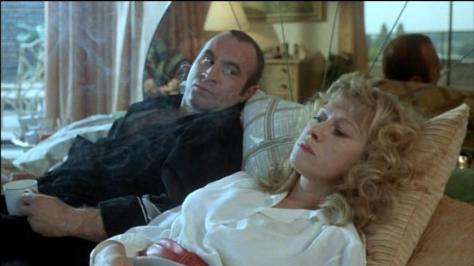By Dennis Hartley
(Originally posted on Digby’s Hullabaloo on August 16, 2014)

If you ladies leave my island, if you survive recruit training, you will be a weapon. You will be a minister of death, praying for war.”
– Gunnery Sgt. Hartman, from Stanley Kubrick’s Full Metal Jacket.
In an ideal world, no one should ever have to “go to war”. But it’s not an ideal world. As long as humans have existed, there has been conflict. And always with the hitting, and the stoning, and the clubbing, and then later with the skewering and the slicing and stabbing…then eventually with the shooting and the bombing and the vaporizing.
So if we absolutely have to have a military, one would hope that the majority of the men and women who serve in our armed forces at least “go to war” as fearless, disciplined, trained professionals, instilled with a sense of honor and integrity. In an ideal world. Which again, this is not.
And according to The Kill Team, there is an insidious culture of lizard-brain savagery within the U.S. military not far evolved from the old days with all the hitting, the stoning and the clubbing.
In his documentary, Dan Krauss artfully blends intimate interviews with moody composition (recalling the films of Errol Morris), coaxing extraordinary confessionals from key participants and witnesses involved in a series of 2010 Afghanistan War incidents usually referred to as the “Maywand District murders“.
In 2011, five soldiers from the Fifth Stryker Brigade, Second Infantry Division (stationed near Kandahar) were officially accused of murdering three innocent Afghan civilians. Led by an apparently psychopathic squad leader, Staff Sgt. Calvin Gibbs, the men were members of 3rd Platoon, which became known as “The Kill Team”.
Gibbs is alleged to have encouraged his men to score as many “kills” as they could get away with, devising a system based on windows of opportunity and keeping “drop” weapons on hand to implicate victims as combatants. As if that weren’t evil enough, participants memorialized the kills with photographs and videos depicting the cheerful perpetrators clowning around with the bodies. It gets worse…victim’s fingers were cut off as trophies.
Krauss puts his primary focus on Specialist Adam Winfield, a soft-spoken, slightly-built young man. While Winfield admits participating in one of the killings (he maintains that he was bullied into involvement, and purposefully aimed high and away from the victim) he was the de facto “conscience” of the squad.
Krauss suggests this through a recreation of Facebook chats between Adam and his ex-Marine dad, in which he expresses shock and dismay over the troubling culture of inhumanity within the platoon, and his growing personal disillusionment with the overall mission. “The army really let me down here…I find out it’s all a lie,” he notes, later offering this ominous assessment: “There are no good men here.”
The full implications of Adam’s moral dilemma obviously did not sink in right away with his father, who asks during one exchange, “Can’t you just ask for a transfer?” to which Adam replies that the infantry doesn’t work that way-especially when you’re on a deployment (eventually, his father did try to reach out to authorities…but was stonewalled).
Winfield alleges that once word reached Staff Sgt. Gibbs that he had been expressing concerns to fellow soldiers, there were strong indications that Gibbs and his co-conspirators began entertaining scenarios on how they might take him out….if need be.
While the director does seem to be taking pains to put him in the most sympathetic light possible, it should be noted that Specialist Winfield was not the “official” whistle blower. That was Specialist Justin Stoner (who also appears in the film).
Ironically, while he was well aware of the Kill Team’s murderous behavior (he was not directly involved in any of the incidents), Stoner’s initial complaint to superiors involved the squad’s insistence on repeatedly crashing his room to get baked on hash (despite his surname, he did not partake, but worried that the lingering smell would unfairly get him into trouble).
When Staff Sgt. Gibbs found out Stoner was the nark, he gathered up his goon squad and gave him a late night beat down in his room (as Stoner philosophically offers with a shrug, “Snitches get stitches.”). It was only during a subsequent inquiry regarding his injuries that Stoner spilled the beans about the murders.
This is really quite a story (sadly, an old one), and because it can be analyzed in many contexts (first person, historical, political, sociological, and psychological), some may find Krauss’ film frustrating, incomplete, or even slanted. But judging purely on the context he has chosen to use (first person) I think it works quite well.
At the time of filming, Specialist Winfield was involved in his trial (he was charged with involuntary manslaughter). Krauss lets us quietly observe the emotional toll on Winfield and his loving parents.
Granted, the nature of the actions that took place begs larger questions, regarding ultimate accountability. Were these men aberrations, as the military’s official line would have us believe? Or is there indeed a culture of barbarism built in to the military psyche?
After all, infantry soldiers are trained to kill, armed to the teeth, and generally thrown into combat situations at a biological stage of life where testosterone levels are running rampant…so what do we expect, right?
Then there’s that time-honored military tradition of scapegoating. As someone brings up in the film, why is it that no one above the rank of Staff Sergeant went to trial in this case? And historically, (aside from Lt. Calley in the My Lai Massacre case) when have any brass ever been held accountable? I guess it’ll always be with the hitting, and the stoning, and the clubbing…














